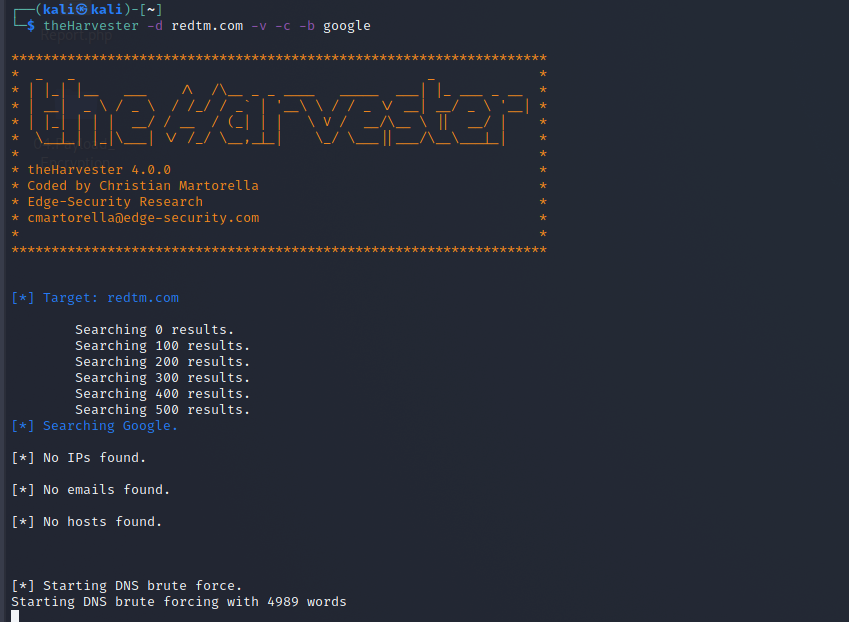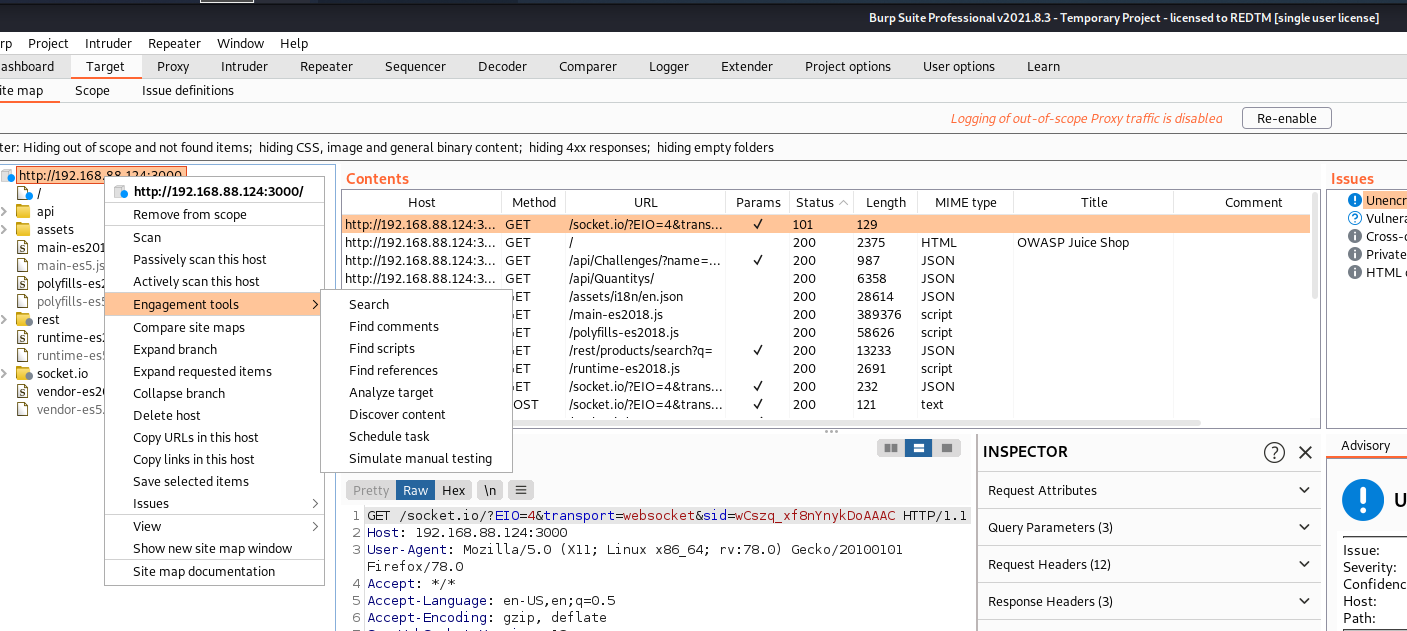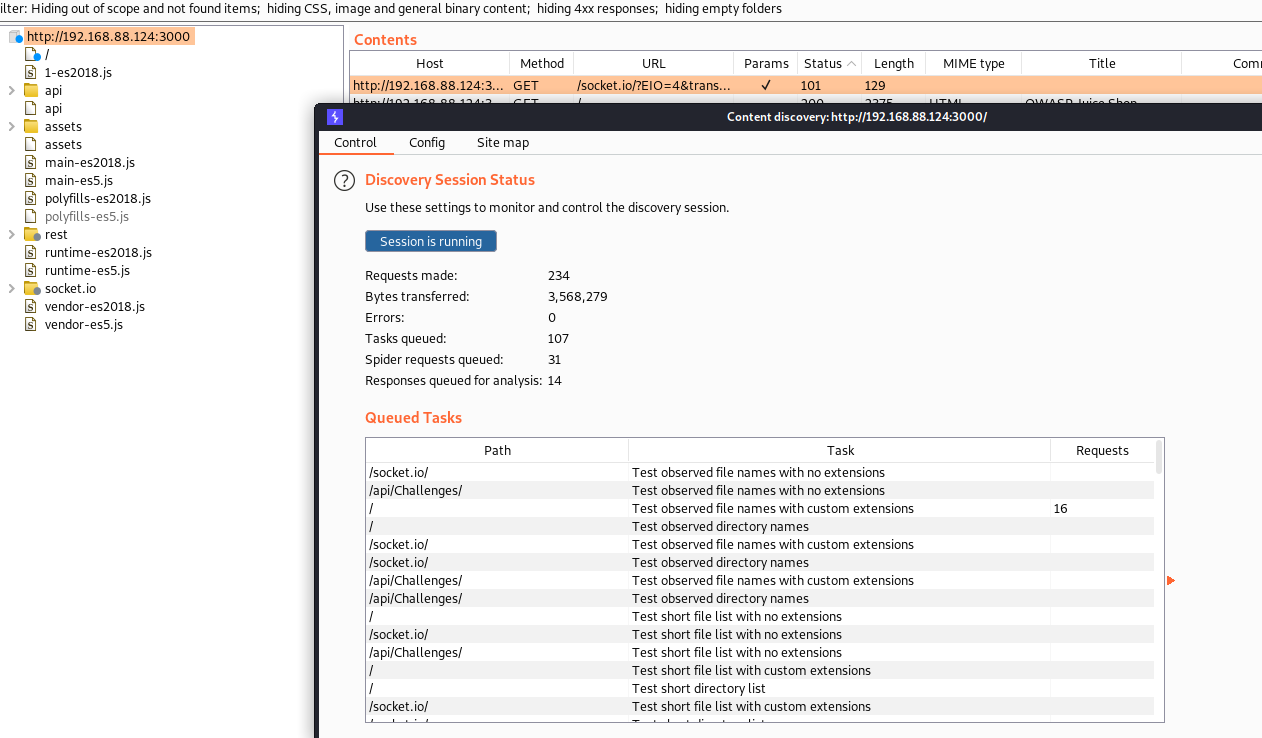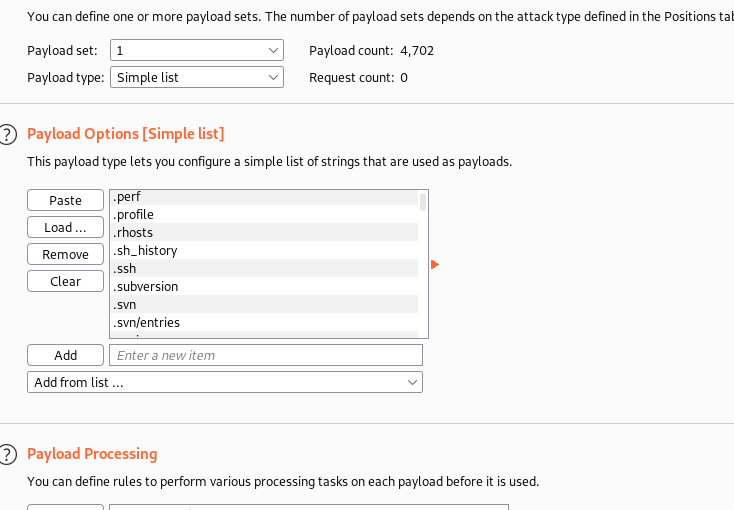Enumerate using Google
Using Google or other search engine we may be able to gather some valuable information. We can search for:
- Config files
- SQL File
- Username, Private keys, even passwords
- Error messages
- Any other technical messages
Mostly i use following queries:
#Find pages
site: site.com
#Find Subdomain
site: site.com -www
#Find files php/jsp/aspx/asp/cfm/sql
site: site.com filetype:php
#Find the page if match keywords in title
site: site.com intitle: admin login
#if the title match our keyword
site: site.com intitle: "index of backup.php"
#Find files containing passwords
intitle: "Index of ftp passwords"
#Find page if url has our keywords
site: site.com inurl:?id=
#pages containing login
site: site.com inurl:admin/reset.php -github
For more Google Dorks: Google Hacking Database!
Gather info from Social Site
Basically, I would search for Employee details, Technical post, and some other inofrmation.
What we can do with those information?
- Getting idea about the company
- Social Engineering
- Username/Password Generate
If we found a employee name, we can search that name on Google, Peoples directory to find more about him.
Example query:
- LinkedIn -
site: linkedin.com intitle: Employee Name - Twitter -
site: twitter.com intitle: Employee Name - Facebook -
site: facebook.com intitle: Employee Name - Google -
'Employee Name Company_name' - Get Employee List of the company from LinkedIn
Banner Grabbing
Banner Grabbing is useful to find existing vulnerability.
WhatWeb
whatweb domain.com
Nmap
nmap -v -p80,443 -sV domain.com
Netcat
nc -vvv domain.com 80
HEAD / HTTP/1.1
Send malformed request:
nc -vvv domain.com 80
GET / BADBOY ISHERE/1.1
Explore Target site
DNS Enumeration
Retrieve Common information:
#Check if robots.txt exist
curl -O -Ss http://www.domain.com/robots.txt
#Get IP address
nslookup domain.com
#Get IP, NS, MX etc
nslookup -querytype=ANY domain.com
#Same thing as nslookup using $ host
host domain.com
host -t ns domain.com
host -t mx domain.com
#Zone Transfer
host -l www.domain.com ns1.domain.com
Reverse Lookup with Bash
for iplist in $(seq 190 255); do host x.x.x.$iplist; done | grep -v "not found"
DNS Enumeration Tools
Note: Any newly found virtual host is a important. Other Virtual could be vulnerable If even main domain not vulnerable which could allow us to move to different virtual host.
#Zone Transfer and Brute force subdomain
dnsenum redtm.com
#Zone Transfer and Brute force subdomain
dnsreecon -a -d redtm.com
#Test for zone transfer and brute force dns
fierce --domain redtm.com
#search for virtual host, brute force dns, also look at google
theHarvester -d redtm.com -v -c -b google
Screenshot of theHarvester:

Enumerate Applications
Scan port
nmap -v -Pn -p- -sV domain.com
Manually connect to every port for banner grabbing
nc -vvv target.com 80
if any none standard http port open, explore:
www.target.com:8080
See how the URL is structured. For example:
#If we have this url
www.target.com/userLogin
#Then Try
www.target.com/adminLogin
Check Digital Certificates manually for informations such as as email and using sslyze
sslyze redtm.com
Check other data on the site:
- HTTP Headers - We may get some valuable information like framework version
- Review HTML Source Code - Check for comments and source code structure, may reveal what is being used or even other sensitive info
- Cookies - Cookie structure may tell us what is being used. Such as
PHPSESSIONIDclearly indicate PHP is there! - Known files and directories - How about trying some know files or directory?
/wp-admintell us it is Wordpress - Error Message - This may reveal internal path, username or other sensitive info. Try to browse something like
/config.phporconfig.php?id[]=449
Enumerate Files and Username
Crawling and File Fuzzing is one of the most important part of web enumeration. What we should search for?
- Find all GET/POST method parameters
- Brute Directory and Files
Nikto
Nikto is a popular web server scanner. It searches for dangerous files and some common vulnerabilities
nikto -h redtm.com
Burp Suites
Crawling
Crawl Using Burp Suite Pro
- Intercept the target
- Right click on the target address.
- Engagement Tools>Discover Content
- Click on “Session is not running”


Now what?
- Check all interesting links after crawling and find url parameters
- Manually visit the site, submit form to capture the parameters
Directory Brute Forcing
First, Send the target root directory / to Intruder and clear all attack points. And newly create attack point as below
GET /§§ HTTP/1.1
Files Brute Forcing
GET /§name§.§extension§ HTTP/1.1
Select attack type Cluster bomb
Go to Payloads Tab, Set payload set to 1 and load the common directory by click on Load button in the Payload Options section.

Next set the payload set to 2 and provide file extension:

Click on Start Attack

GoBuster
Another free tool i use is gobuster to find hidden files and folder:
gobuster dir -u https://host/ -t 15 -w /usr/share/dirb/wordlists/common.txt -x .php,.txt,.conf -k
If we get error something like:
Error: the server returns a status code that matches the provided options for non existing urls. http://192.168.88.124:3000/baac80b0-3490-4651-b113-de855abd1eee => 200 (Length: 1960). To continue please exclude the status code, the length or use the --wildcard switch
Try with exclude-length:
gobuster dir -u http://192.168.88.124:3000/ -t 15 -w /usr/share/dirb/wordlists/common.txt -x .php,.txt,.conf -k --exclude-length 1960

Now what?
- Use these info to find Auth, Mis-configuration, Business logic, or Injection vulnerabilities.
- Make an effective password attack plan.
- Plan a good social engineering attack.
Without information gathering and enumeration an effective plan is never possible!